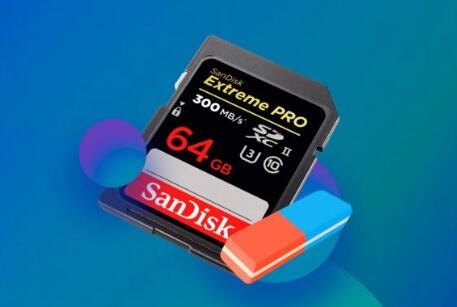SD cards are widely used for storing data in cameras, smartphones, and other devices. However, accidental deletions can happen, leading to data loss. Fortunately, recovering deleted files from an SD card is often possible, especially if no new data has been written over the deleted files.
When you delete a file from an SD card, the data itself isn’t immediately erased. Instead, the space it occupied is marked as available for new data. This means that until that space is overwritten, recovery is feasible. Understanding this concept is crucial for successful recovery.
Step 1: Stop Using the SD Card
Immediately stop using the SD card after realizing that files have been deleted. Any new files written to the card could overwrite the deleted files, making recovery impossible.

Step 2: Prepare for Recovery
Before attempting recovery, gather the necessary tools:
A computer (Windows or Mac)
An SD card reader (if your computer doesn’t have an SD card slot)
Data recovery software (more on this in the next section)
Step 3: Choose the Right Data Recovery Software
Panda Assistant is a cutting-edge data recovery software designed to help users effortlessly retrieve lost or deleted files from various storage devices, including external hard drives, SD cards, and USB drives. With a user-friendly interface, it caters to both novice and experienced users, ensuring a seamless recovery process. Panda Assistant utilizes advanced algorithms to delve into the depths of storage media, maximizing the chances of recovering files in various formats. Its ultimate goal is to provide reliable, efficient, and secure data recovery solutions while safeguarding user privacy. Whether you’ve accidentally deleted important documents or experienced a device malfunction, Panda Assistant stands ready to assist, making data recovery an achievable task for everyone.
Step 4: Install and Launch the Recovery Software
Download the chosen recovery software from its official website.
Install the software following the on-screen instructions.
Once installed, launch the application.
Step 5: Connect the SD Card to Your Computer
Insert the SD card into the card reader.
Connect the card reader to your computer.
Ensure the computer recognizes the SD card.
Step 6: Start the Recovery Process
In Recuva, select the type of files you want to recover (e.g., images, documents).
Choose the SD card as the location to scan for deleted files.
Click on “Start” to begin the scanning process.
Step 7: Scan for Deleted Files
The software will perform a deep scan of the SD card, searching for recoverable files.
This process may take some time, depending on the size of the card and the number of deleted files.
Step 8: Review the Scan Results
Once the scan is complete, a list of recoverable files will be displayed.
Preview files (if supported) to determine which ones you want to recover.
Check the recovery status; files marked as “Excellent” or “Poor” can usually be recovered, but quality may vary.
Step 9: Select Files for Recovery
Mark the files you wish to recover.
Click on the “Recover” button.
Step 10: Choose a Recovery Destination
Important: Do not recover files directly back to the SD card, as this can overwrite other deleted files.
Instead, choose a different location on your computer (e.g., desktop or a separate folder).
Step 11: Complete the Recovery
Once the recovery process is complete, navigate to the location where you saved the recovered files.
Verify that the files are intact and accessible.
Step 12: Prevent Future Data Loss
To avoid future accidental deletions, consider the following tips:
Regularly back up your data to a computer or cloud storage.
Use file recovery software periodically to create backups of important files.
Always double-check before deleting files.
Troubleshooting Common Issues
Files Not Found: If the software doesn’t find the deleted files, try using another recovery tool. Different tools may have varying success rates.
Corrupted Files: Sometimes, recovered files may be corrupted. This can happen if new data has overwritten the deleted files.
Error Messages: If you encounter errors during recovery, check the SD card for physical damage and try a different card reader.
Data loss can be a stressful experience, but with proper precautions and recovery strategies, you can safeguard your important files. Always maintain regular backups and familiarize yourself with data recovery processes to handle emergencies more effectively.
About us and this blog
Panda Assistant is built on the latest data recovery algorithms, ensuring that no file is too damaged, too lost, or too corrupted to be recovered.
Request a free quote
We believe that data recovery shouldn’t be a daunting task. That’s why we’ve designed Panda Assistant to be as easy to use as it is powerful. With a few clicks, you can initiate a scan, preview recoverable files, and restore your data all within a matter of minutes.
Subscribe to our newsletter!
More from our blog
See all postsRecent Posts
- Data recovery salt lake city utah 2025-04-18
- Data recovery sacramento 2025-04-18
- Data recovery miami 2025-04-18

 Try lt Free
Try lt Free Recovery success rate of up to
Recovery success rate of up to









